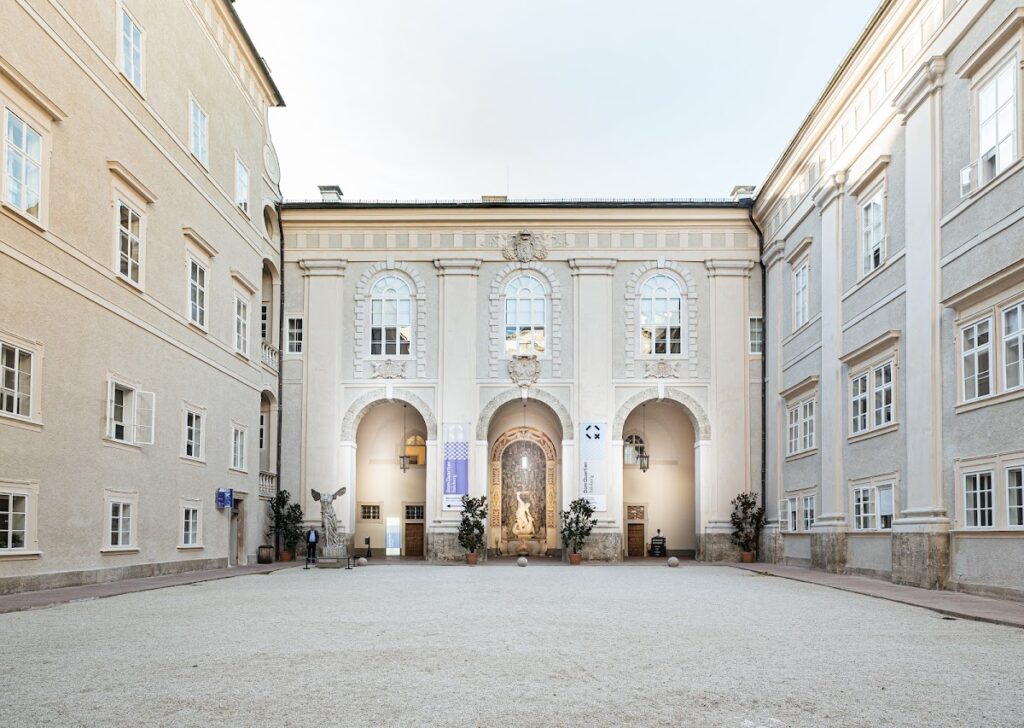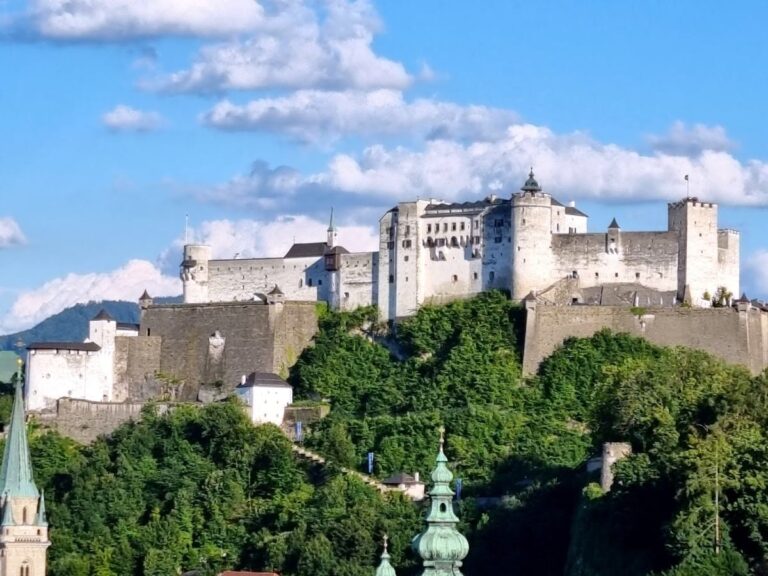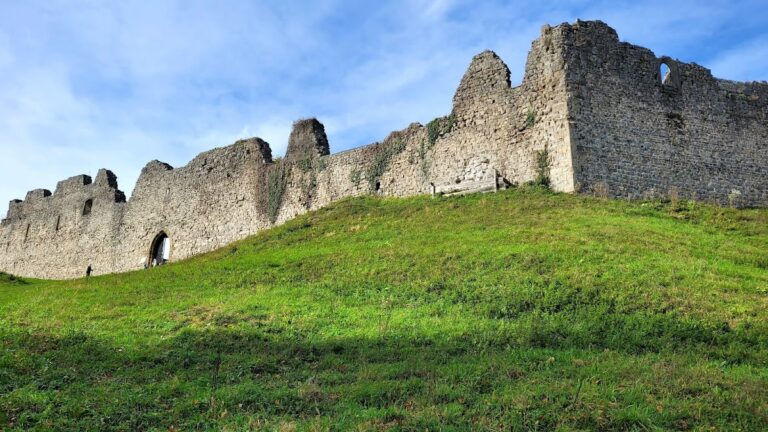Salzburg Residenz: The Historic Residence of the Prince-Archbishops in Austria
Visitor Information
Google Rating: 4.7
Popularity: Low
Google Maps: View on Google Maps
Official Website: www.domquartier.at
Country: Austria
Civilization: Unclassified
Remains: Military
History
The Salzburg Residenz is located in Salzburg, Austria. It was originally established by the medieval ecclesiastical authorities of the city, serving as the residence and administrative center for the Prince-Archbishops of Salzburg.
The earliest documentation of the Residenz dates back to around 1120, when the Prince-Archbishops relocated their official dwelling from the nearby St. Peter’s Abbey to its current site near Salzburg Cathedral. This move was initiated by Archbishop Conrad I, marking the beginning of the building’s long association with Salzburg’s religious and political leadership.
Around 1600, the Residenz underwent a major transformation reflecting Renaissance architectural style. Archbishop Wolf Dietrich von Raitenau spearheaded this renovation, with possible design input from the Venetian architect Vincenzo Scamozzi, who visited Salzburg in 1603 and 1604. This phase established much of the palace’s foundational structure. Subsequent Prince-Archbishops Markus Sittikus and Paris Lodron further advanced building efforts, while later Baroque influences came from architects such as Johann Lukas von Hildebrandt. The interiors were elaborately decorated by notable painters Johann Michael Rottmayr and Martino Altomonte during the late 1600s and early 1700s, adding artistic richness to the palace’s halls and chambers.
Throughout its history, the Residenz functioned as a residence for ecclesiastical rulers and as a venue for official and public events. It also played a role in the cultural life of Salzburg; for example, Wolfgang Amadeus Mozart performed and premiered some of his early operas in its halls during the 18th century.
Following the secularization of ecclesiastical territories in 1803, the Residenz ceased to be the Prince-Archbishops’ residence. Instead, it became the home of various members of the Austrian imperial family, including Empress Dowager Caroline Augusta of Bavaria and relatives from the Habsburg-Tuscany lineage. The palace wing known today as the Toskanatrakt, or Tuscany Wing, derives its name from this period.
In the 20th century, parts of the Residenz were repurposed: the Wallistrakt, originally built as an apartment wing for Archbishop Wolf Dietrich in the early 1600s, underwent reconstruction and later housed university facilities. Since 2014, it has served as the site of Museum St. Peter. In 1923, the Residenzgalerie art gallery was established within the complex to showcase an art collection that replaces the original assembly of artworks once owned by the prince-archbishops.
The palace grounds also featured the Dietrichsruh garden complex, created between 1605 and 1612 with elaborate Renaissance designs including water features and grottos. This garden was altered significantly about 1790 under Archbishop Colloredo, who removed many original elements. The Residenz therefore reflects layers of Salzburg’s religious, political, artistic, and horticultural history spanning from the medieval period to the modern era.
Remains
The Salzburg Residenz is a large palace complex arranged around four main courtyards. These include the central Haupthof or main courtyard, with the Toskanatrakt courtyard, the former Dietrichsruh garden courtyard, and a smaller courtyard adjoining the Wallistrakt. The buildings surrounding these courtyards form an extensive four-wing structure constructed in stone, marble, and elaborately decorated stucco and fresco art.
The main courtyard is distinguished by an arcade and a Hercules fountain, with an entrance that leads up a broad marble staircase completed around 1612. This staircase ascends to the principal state rooms located on the second floor. These halls and rooms provide a near-continuous decorative cycle celebrating the life of Alexander the Great, featuring paintings and stucco ornamentation, mainly from the late 17th and early 18th centuries, by artists Johann Michael Rottmayr and Martino Altomonte.
Among the palace’s grand interiors is the Carabinierisaal, or Carabinieri Hall, initially constructed near 1600 and expanded in 1660. It is the largest hall in the Residenz, noted for its richly detailed stucco ceiling completed in 1689 by Francesco and Carlo Brenno alongside Antonio Carabelli. The hall’s ceiling fresco by Rottmayr depicts symbolic imagery, including the four classical elements and a scene drawn from Virgil’s epic poem, the Aeneid. A striking two-armed marble staircase within the hall provides access to the Kaisersaal, another significant space.
The Rittersaal, or Knights’ Hall, features ceiling paintings by Rottmayr from 1714 and stucoo decorations by Alberto Camesina and Peter Pflauder. This room illustrates episodes from Alexander the Great’s life as well as his famous horse, Bucephalus, serving traditionally as both a reception and performance venue.
Nearby, the Konferenzsaal, or Conference Hall, contains a ceiling painting by Martino Altomonte portraying Alexander the Great at the Battle of Granicus. Historically, this hall was the site of Mozart’s debut concert in 1763.
The Audienzsaal, or Audience Hall, includes five gilded ceiling paintings by Rottmayr framed with stucco. It is further adorned with Brussels tapestries featuring the coat of arms of Archbishop Wolf Dietrich and furnished with early classicist pieces from Paris dating to 1775.
The Residenz also comprises smaller, private chambers. The Retirada is a modest living and working room decorated with ceiling paintings by Altomonte that depict Alexander’s sacrifice in the Temple of Jerusalem and related scenes. A small chapel within the palace contains a dome vault fresco by Rottmayr and an altar likely crafted by architect Antonio Beduzzi in 1711.
The Dietrichsruh garden, originally designed as a Renaissance garden complex between 1605 and 1612, incorporated two walled courtyards, water features, artificial grottos, and a garden hall or Sala terrena with open arcades and a fountain. Over time, modifications walled up the garden hall, though one grotto still survives containing a statue of Hercules dating from about 1610 along with decorative wall paintings.
The Wallistrakt, forming part of the complex’s northern section, includes the Hofbogengebäude constructed between 1604 and 1606 on the medieval Frohnhof site. This wing was designed to house the prince-archbishop’s private apartments, featuring south-facing chambers and a garden hall opening to the walled Hofgärtl garden. Renovations under Markus Sittikus led to the closure of the Sala terrena, likely by Santino Solari, an architect active in Salzburg in the early 17th century.
The Wallistrakt underwent significant reconstruction in the 20th century during 1964 and 1965, preserving only the exterior walls and some garden enclosures while many interior stucco ceilings from the 18th century were lost, apart from the Sala terrena and a decorated spiral staircase.
Other notable architectural elements include stone window frames, marble staircases, marble portals, stucco decorations, and extensive fresco work. The palace façades were modernized with larger windows under the tenure of Archbishop Franz Anton von Harrach. The complex contains over 180 rooms and halls, including fifteen main state rooms, with features such as a marble portal inscribed with the initials of Archbishop Johann Ernst von Thun.
North of the Residenz are the Dombögen or Cathedral Arches, constructed around 1600 during the rule of Archbishop Guidobald von Thun. These structures have façades that were later heightened and finished with an attic above their gutter roofs.
The Toskanatrakt, or Tuscany Wing, located on the northern side of the Residenz, is characterized by walled-up arcades across two floors supported by Ionic columns. Rebuilt under Archbishop Colloredo, this wing now accommodates the law faculty of the University of Salzburg, connecting the palace’s historical presence with contemporary academic use.










